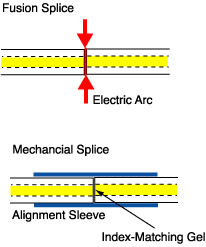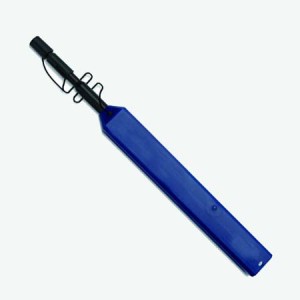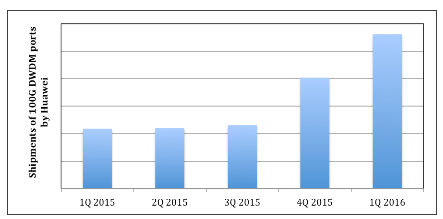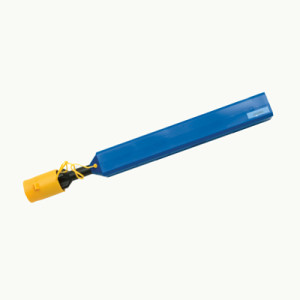Splicing is only needed if the cable runs are too long for one straight pull or you need to mix a number of different types of cables (like bringing a 48 fibre cable in and splicing it to six 8 fibre cables – could you have used a breakout cable instead?) And of course, we use splices for restoration, after the number one problem of outside plant cables, a dig-up and cut of a buried cable, usually referred to as “backhoe fade” for obvious reasons!
Splices are “permanent” connections between two fibres. There are two types of splices, fusion and mechanical, and the choice is usually based on cost or location. Most splicing is on long haul outside plant SM cables, not multimode LANs, so if you do outside plant SM jobs, you will want to learn how to fusion splice. If you do mostly MM LANs, you may never see a splice.

Fusion splices are made by “welding” the two fibres together usually by an electric arc. Obviously, you don’t do that in an explosive atmosphere (at least not more than once!), so fusion splicing is usually done above ground in a truck or trailer set up for the purpose. Good fusion splicers cost $15,000 to $40,000, but the splices only cost a few dollars each. Today’s singlemode fusion splicers are automated and you have a hard time making a bad splice. The biggest application is singlemode fibres in outside plant installations.
Mechanical splices are alignment gadgets that hold the ends of two fibres together with some index matching gel or glue between them. There are a number of types of mechanical splices, like little glass tubes or V-shaped metal clamps. The tools to make mechanical splices are cheap, but the splices themselves are expensive. Many mechanical splices are used for restoration, but they can work well with both singlemode and multimode fibre, with practice.



